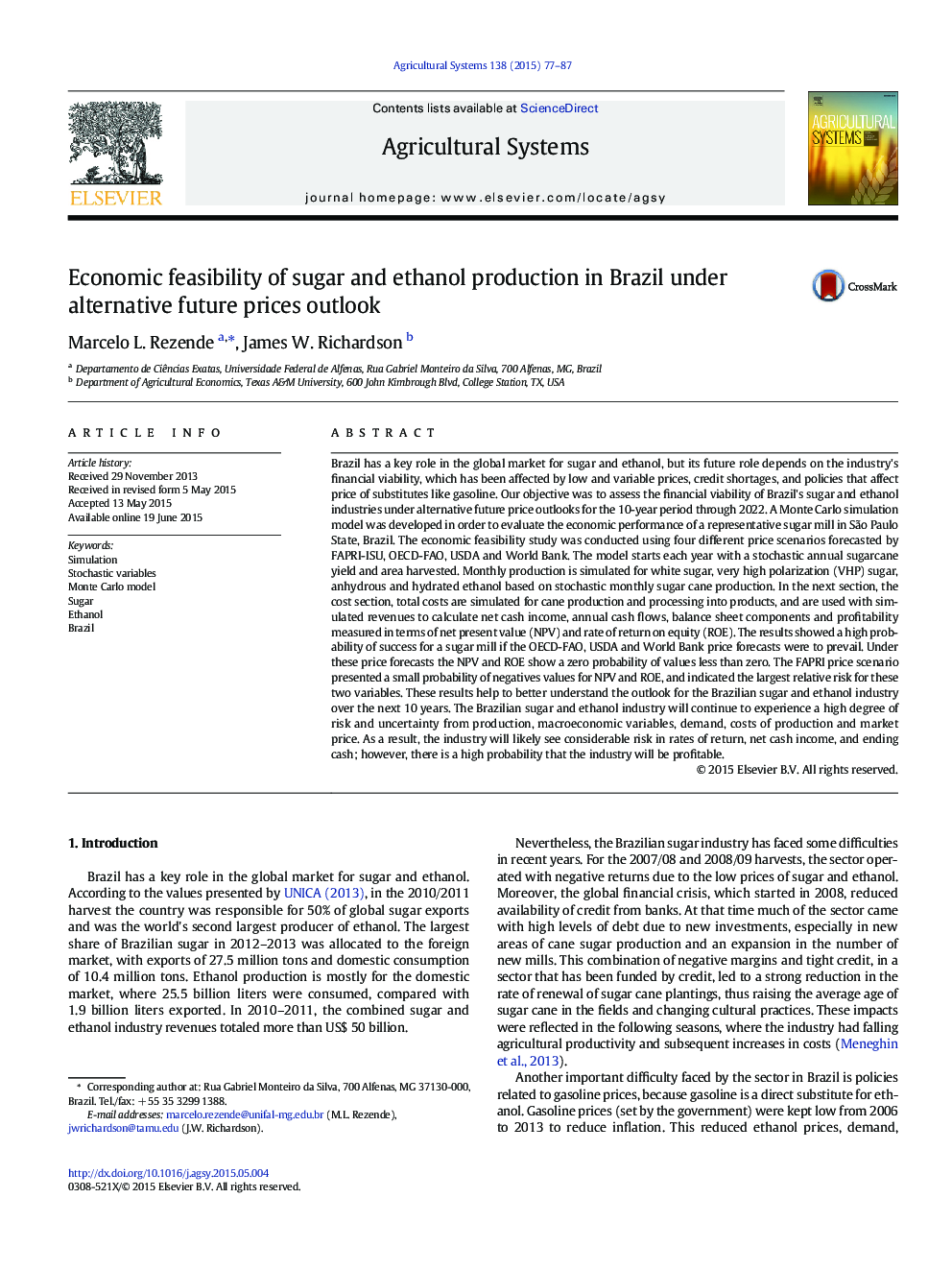| Article ID | Journal | Published Year | Pages | File Type |
|---|---|---|---|---|
| 4491183 | Agricultural Systems | 2015 | 11 Pages |
•We developed a Monte Carlo simulation model to represent a sugar mill in Brazil.•Risk faced by a sugar mill and ethanol plants in Brazil are included in the model.•Four future prices scenarios were used to study the viability of sugar mill.•The four studied scenarios show high probabilities of success in the next 10 years.•Our results show a high degree of risk and uncertainty in the industry.
Brazil has a key role in the global market for sugar and ethanol, but its future role depends on the industry's financial viability, which has been affected by low and variable prices, credit shortages, and policies that affect price of substitutes like gasoline. Our objective was to assess the financial viability of Brazil's sugar and ethanol industries under alternative future price outlooks for the 10-year period through 2022. A Monte Carlo simulation model was developed in order to evaluate the economic performance of a representative sugar mill in São Paulo State, Brazil. The economic feasibility study was conducted using four different price scenarios forecasted by FAPRI-ISU, OECD-FAO, USDA and World Bank. The model starts each year with a stochastic annual sugarcane yield and area harvested. Monthly production is simulated for white sugar, very high polarization (VHP) sugar, anhydrous and hydrated ethanol based on stochastic monthly sugar cane production. In the next section, the cost section, total costs are simulated for cane production and processing into products, and are used with simulated revenues to calculate net cash income, annual cash flows, balance sheet components and profitability measured in terms of net present value (NPV) and rate of return on equity (ROE). The results showed a high probability of success for a sugar mill if the OECD-FAO, USDA and World Bank price forecasts were to prevail. Under these price forecasts the NPV and ROE show a zero probability of values less than zero. The FAPRI price scenario presented a small probability of negatives values for NPV and ROE, and indicated the largest relative risk for these two variables. These results help to better understand the outlook for the Brazilian sugar and ethanol industry over the next 10 years. The Brazilian sugar and ethanol industry will continue to experience a high degree of risk and uncertainty from production, macroeconomic variables, demand, costs of production and market price. As a result, the industry will likely see considerable risk in rates of return, net cash income, and ending cash; however, there is a high probability that the industry will be profitable.
